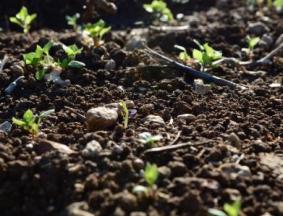An active soil life is good for plant growth and development as it makes nutrients available to the crop, produces humus and contributes to good soil structure. Additionally, when soil life is well developed, harmful fungi and bacteria multiply less rapidly. A rich and active soil life thus promotes the general disease resistance of the soil.
Soil life consists of a large number of different organisms, such as fungi, bacteria, mites, nematodes, pot worms and earthworms. Micro-organisms like fungi and bacteria are not easy to see in the soil. Until now, these organisms were identified by microscopic examination.
Unique composition of cell walls
The Soil Life Monitor uses an internationally recognized method to identify different functional groups. The method is based on the analysis of fatty acids in the cell membranes of living micro-organisms, using gas chromatography.
This concerns so-called phospholipid fatty acids (PLFA). The PLFA composition of cell walls is unique to each of the groups. PLFAs only occur in living organisms; in dead cells these fatty acids break down quickly. Knowing which PLFAs are present in a soil sample therefore provides information about both the amount of living biomass and which groups of micro-organisms are present in the soil. The method is not suitable for identifying specific species. DNA analyses and plating methods continue to be relevant for this.
Comparing soils and treatments
The Soil Life Monitor identifies functional groups of micro-organisms and gives a ‘fingerprint’ of the soil life that is present. The results of the analysis make it possible to compare different soils, to monitor them over time and to measure the effect of different treatments on soil life.
More information
| Name | Date | File |
|---|---|---|
| Brochure Soil Life Monitor | 09-09-2022 |

